 Marathon runner Peter Loong recently told a story about how he forgot his shoes before getting ready to compete. He was able to receive advice from a barefoot runner who gave him several tips and tricks in order to compete without sneakers. In regards to how he performed, Loong said, “I ran (barefooted) behind the group the whole way... At the end point, even I was shocked that I made it.” Nevertheless, it is no secret that barefoot running requires a certain technique. These runners are required to land on their heels first instead of on the balls of their feet, since this method tends to protect against injury. Loong says that he would not recommend any beginner barefoot runner to run a marathon because the technique takes a while to perfect.
Marathon runner Peter Loong recently told a story about how he forgot his shoes before getting ready to compete. He was able to receive advice from a barefoot runner who gave him several tips and tricks in order to compete without sneakers. In regards to how he performed, Loong said, “I ran (barefooted) behind the group the whole way... At the end point, even I was shocked that I made it.” Nevertheless, it is no secret that barefoot running requires a certain technique. These runners are required to land on their heels first instead of on the balls of their feet, since this method tends to protect against injury. Loong says that he would not recommend any beginner barefoot runner to run a marathon because the technique takes a while to perfect.
Barefoot running has its own share of benefits and disadvantages. If you have any concerns about your feet or ankles, contact one of our podiatrists from Lovely Foot Associates, PC. Our doctors will treat your foot and ankle needs.
Barefoot Running
The Impact of Barefoot Running
The Advantages of Barefoot Running
The Drawbacks of Barefoot Running
So, what can runners do to make barefoot running safe? It’s best to make a slow transition from running shoes to barefoot running. Once the feet begin to adjust, try walking, then jogging and gradually increasing the distance. Minimalist running shoes may also be an option.
If you have any questions please feel free to contact one of our office located in Johnstown, PA . We offer the newest diagnostic and treatment technologies for all your foot and ankle needs.
 While high heels are considered to be fashionable by a number of people, they present a number of health issues to women’s feet. High heels can exacerbate conditions like bunions and lead to hammertoes, foot pain, and more. They can also be difficult to walk in and potentially cause women to fall. That said, should women wear high heels while pregnant? The additional weight of the baby can throw off a woman’s balance when walking in high heels. While the womb is well protected with thick walls and fluid that acts as a cushion, a fall can happen anywhere and can be very serious. The later a woman is in pregnancy, the more likely a fall has the potential to put a woman into labor. It is advised to avoid high heels during the later stages of pregnancy and to take caution during early pregnancy. It’s also good to consult a podiatrist whether high heels are right for you if you’re pregnant.
While high heels are considered to be fashionable by a number of people, they present a number of health issues to women’s feet. High heels can exacerbate conditions like bunions and lead to hammertoes, foot pain, and more. They can also be difficult to walk in and potentially cause women to fall. That said, should women wear high heels while pregnant? The additional weight of the baby can throw off a woman’s balance when walking in high heels. While the womb is well protected with thick walls and fluid that acts as a cushion, a fall can happen anywhere and can be very serious. The later a woman is in pregnancy, the more likely a fall has the potential to put a woman into labor. It is advised to avoid high heels during the later stages of pregnancy and to take caution during early pregnancy. It’s also good to consult a podiatrist whether high heels are right for you if you’re pregnant.
Pregnant women with swollen feet can be treated with a variety of different methods that are readily available. For more information about other cures for swollen feet during pregnancy, consult with one of our podiatrists from Lovely Foot Associates, PC. Our doctors will attend to all of your foot and ankle needs.
What Foot Problems Can Arise During Pregnancy?
One problem that can occur is overpronation, which occurs when the arch of the foot flattens and tends to roll inward. This can cause pain and discomfort in your heels while you’re walking or even just standing up, trying to support your baby.
Another problem is edema, or swelling in the extremities. This often affects the feet during pregnancy but tends to occur in the later stages.
How Can I Keep My Feet Healthy During Pregnancy?
If you have any questions please feel free to contact our office located in Johnstown, PA . We offer the newest diagnostic and treatment technologies for all your foot and ankle needs.
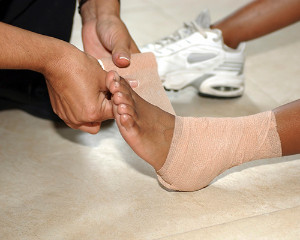 Orlando City Lions midfielder Will Johnson recently suffered a lateral ankle sprain against the Columbus Crew. The injury will take him out for two to four weeks. Johnson is considered to be a good player and acts as backup captain when teammate Kaka is not in the game. Johnson is not the only injured Lions player. Defensive leader Jonathan Spector suffered a knee injury that took him off the field recently. While the Lions are considered to have good backup players, the loss is still a blow to the team. If Johnson is out for four weeks, he is expected to miss around four games.
Orlando City Lions midfielder Will Johnson recently suffered a lateral ankle sprain against the Columbus Crew. The injury will take him out for two to four weeks. Johnson is considered to be a good player and acts as backup captain when teammate Kaka is not in the game. Johnson is not the only injured Lions player. Defensive leader Jonathan Spector suffered a knee injury that took him off the field recently. While the Lions are considered to have good backup players, the loss is still a blow to the team. If Johnson is out for four weeks, he is expected to miss around four games.
Sports related foot and ankle injuries require proper treatment before players can go back to their regular routines. For more information, contact one of our podiatrists of Lovely Foot Associates, PC. Our doctors can provide the care you need to keep you pain-free and on your feet.
Sports Related Foot and Ankle Injuries
Foot and ankle injuries are a common occurrence when it comes to athletes of any sport. While many athletes dismiss the initial aches and pains, the truth is that ignoring potential foot and ankle injuries can lead to serious problems. As athletes continue to place pressure and strain the area further, a mild injury can turn into something as serious as a rupture and may lead to a permanent disability. There are many factors that contribute to sports related foot and ankle injuries, which include failure to warm up properly, not providing support or wearing bad footwear. Common injuries and conditions athletes face, including:
Sports related injuries are commonly treated using the RICE method. This includes rest, applying ice to the injured area, compression and elevating the ankle. More serious sprains and injuries may require surgery, which could include arthroscopic and reconstructive surgery. Rehabilitation and therapy may also be required in order to get any recovering athlete to become fully functional again. Any unusual aches and pains an athlete sustains must be evaluated by a licensed, reputable medical professional.
If you have any questions please feel free to contact our office located in Johnstown, PA . We offer the newest diagnostic and treatment technologies for all your foot and ankle needs.
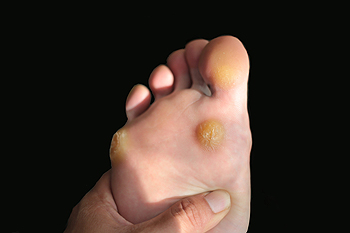 Corns and calluses are thickened areas of skin that form as result of an excess amount of friction and pressure. Diabetics are at a higher risk of developing complications as a result of corns and calluses, so it is imperative that they treat them immediately and with caution. However, those who do not have diabetes should treat their corns and calluses by soaking their feet, using over-the-counter pads and by wearing comfortable shoes. Moisturizing your feet can also be helpful in preventing corns and calluses because it helps keep your skin soft.
Corns and calluses are thickened areas of skin that form as result of an excess amount of friction and pressure. Diabetics are at a higher risk of developing complications as a result of corns and calluses, so it is imperative that they treat them immediately and with caution. However, those who do not have diabetes should treat their corns and calluses by soaking their feet, using over-the-counter pads and by wearing comfortable shoes. Moisturizing your feet can also be helpful in preventing corns and calluses because it helps keep your skin soft.
If you have any concerns regarding your feet and ankles, contact one of our podiatrists of Lovely Foot Associates, PC. Our doctors will treat your foot and ankle needs.
Corns: What Are They? and How Do You Get Rid of Them?
Corns can be described as areas of the skin that have thickened to the point of becoming painful or irritating. They are often layers and layers of the skin that have become dry and rough, and are normally smaller than calluses.
Ways to Prevent Corns
There are many ways to get rid of painful corns such as wearing:
Treating Corns
Treatment of corns involves removing the dead skin that has built up in the specific area of the foot. Consult with Our doctors to determine the best treatment option for your case of corns.
If you have any questions please feel free to contact our office located in Johnstown, PA . We offer the newest diagnostic and treatment technologies for all your foot and ankle needs.
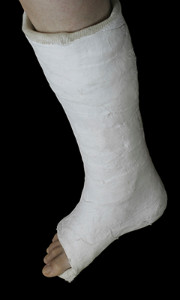 Greg Olsen, one of the Panthers' best players and one of the best tight ends in the league, recently broke his foot during the Panthers vs. Buffalo Bills home opening game. The very next day he underwent surgery on his foot. While the surgery went well, Olsen is expected to miss six to eight weeks—a good portion of the season. Olsen is the first tight end in NFL history to have three consecutive 1,000-yard receiving seasons.
Greg Olsen, one of the Panthers' best players and one of the best tight ends in the league, recently broke his foot during the Panthers vs. Buffalo Bills home opening game. The very next day he underwent surgery on his foot. While the surgery went well, Olsen is expected to miss six to eight weeks—a good portion of the season. Olsen is the first tight end in NFL history to have three consecutive 1,000-yard receiving seasons.
A broken foot requires immediate medical attention and treatment. If you need your feet checked, contact one of our podiatrists from Lovely Foot Associates, PC. Our doctors can provide the care you need to keep you pain-free and on your feet.
Broken Foot Causes, Symptoms, and Treatment
A broken foot is caused by one of the bones in the foot typically breaking when bended, crushed, or stretched beyond its natural capabilities. Usually the location of the fracture indicates how the break occurred, whether it was through an object, fall, or any other type of injury.
Common Symptoms of Broken Feet:
Those that suspect they have a broken foot shoot seek urgent medical attention where a medical professional could diagnose the severity.
Treatment for broken bones varies depending on the cause, severity and location. Some will require the use of splints, casts or crutches while others could even involve surgery to repair the broken bones. Personal care includes the use of ice and keeping the foot stabilized and elevated.
If you have any questions please feel free to contact our office located in Johnstown, PA . We offer the newest diagnostic and treatment technologies for all your foot and ankle needs.
 Biomechanics, or the study of mechanics in biological organisms such as humans, plays an important part in podiatry. Understanding the mechanics of the foot allows podiatrists to understand injuries, make proper diagnoses, and provide treatment strategies. For those who have foot injuries, podiatrists understanding the biomechanics of the feet lets them know if the injury is caused from impact, movement, or other variables. With the exact cause known, podiatrists can offer a number of solutions, such as orthotics, keeping pressure off the foot, and other methods to treat the condition. Biomechanics allows podiatrists to get a better understanding of our feet and how they work.
Biomechanics, or the study of mechanics in biological organisms such as humans, plays an important part in podiatry. Understanding the mechanics of the foot allows podiatrists to understand injuries, make proper diagnoses, and provide treatment strategies. For those who have foot injuries, podiatrists understanding the biomechanics of the feet lets them know if the injury is caused from impact, movement, or other variables. With the exact cause known, podiatrists can offer a number of solutions, such as orthotics, keeping pressure off the foot, and other methods to treat the condition. Biomechanics allows podiatrists to get a better understanding of our feet and how they work.
If you have any concerns about your feet, contact one of our podiatrists from Lovely Foot Associates, PC. Our doctors can provide the care you need to keep you pain-free and on your feet.
Biomechanics in Podiatry
Podiatric biomechanics is a particular sector of specialty podiatry with licensed practitioners who are trained to diagnose and treat conditions affecting the foot, ankle and lower leg. Biomechanics deals with the forces that act against the body, causing an interference with the biological structures. It focuses on the movement of the ankle, the foot and the forces that interact with them.
A History of Biomechanics
Modern technological improvements are based on past theories and therapeutic processes that provide a better understanding of podiatric concepts for biomechanics. Computers can provide accurate information about the forces and patterns of the feet and lower legs.
Understanding biomechanics of the feet can help improve and eliminate pain, stopping further stress to the foot.
If you have any questions please feel free to contact our office located in Johnstown, PA . We offer the newest diagnostic and treatment technologies for all your foot and ankle needs.
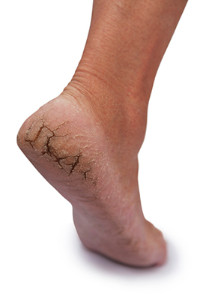 Cracked heels can affect anyone and are a common foot ailment. Thankfully, the condition typically isn’t serious in most cases and can be taken care of. Moisturizers are a good way to revitalize skin and prevent further skin from drying. Applying moisturizer twice a day—once in the morning and once at night—should be sufficient. Soaking your feet can also help moisturize the skin and is very relaxing. Be sure to properly dry the feet when finished, and apply moisturizer. It is not recommended to remove skin from the area by yourself because this can damage the new skin layer or potentially create a wound. If you have cracked heels that bother you and won’t go away, see your podiatrist for treatment.
Cracked heels can affect anyone and are a common foot ailment. Thankfully, the condition typically isn’t serious in most cases and can be taken care of. Moisturizers are a good way to revitalize skin and prevent further skin from drying. Applying moisturizer twice a day—once in the morning and once at night—should be sufficient. Soaking your feet can also help moisturize the skin and is very relaxing. Be sure to properly dry the feet when finished, and apply moisturizer. It is not recommended to remove skin from the area by yourself because this can damage the new skin layer or potentially create a wound. If you have cracked heels that bother you and won’t go away, see your podiatrist for treatment.
Cracked heels are unsightly and can cause further damage to your shoes and feet. If you have any concerns, contact one of our podiatrists from Lovely Foot Associates, PC. Our doctors can provide the care you need to keep you pain-free and on your feet.
Cracked Heels
Cracked heels appear unappealing and can make it harder for you walk around in sandals. Aside from looking unpleasant, cracked heels can also tear stockings, socks, and wear out your shoes. There are several methods to help restore a cracked heel and prevent further damage.
How Do You Get Them?
Dry skin is the number one culprit in creating cracked heels. Many athletes, walkers, joggers, and even swimmers suffer from cracked heels. Age and skin oil production play a role to getting cracked heels as well.
Promote Healing
Over the counter medicines can help, especially for those that need instant relief or who suffer from chronic dry feet.
Wear Socks – Wearing socks with medicated creams helps lock in moisture.
Moisturizers – Applying both day and night will help alleviate dryness which causes cracking.
Pumice Stones – These exfoliate and remove dead skin, which allows for smoother moisturizer application and better absorption into the skin.
Change in Diet
Eating healthy with a well-balanced diet will give the skin a fresh and radiant look. Your body responds to the kinds of food you ingest. Omega-3 fatty acids and zinc supplements can also revitalize skin tissue.
Most importantly, seek professional help if unsure how to proceed in treating cracked heels. A podiatrist will help you with any questions or information needed.
If you have any questions, please feel free to contact our office located in Johnstown, PA . We offer the newest diagnostic and treatment technologies for all your foot care needs.
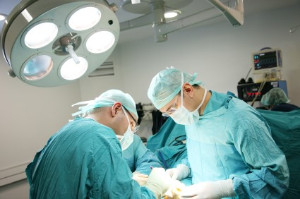 Goalkeeper and captain Manuel Neuer of the Bayern Munich soccer team recently underwent surgery for a hairline fracture on a metatarsal in his left foot. The surgery was reported to be a success. He is expected to be out for four months to recover. Neuer had previously missed the final stages of the last season with the same injury.
Goalkeeper and captain Manuel Neuer of the Bayern Munich soccer team recently underwent surgery for a hairline fracture on a metatarsal in his left foot. The surgery was reported to be a success. He is expected to be out for four months to recover. Neuer had previously missed the final stages of the last season with the same injury.
Foot surgery is sometimes necessary to treat a foot ailment. To learn more, contact one of our podiatrists of Lovely Foot Associates, PC. Our doctors will assist you with all of your foot and ankle needs.
When Is Surgery Necessary?
Foot and ankle surgery is generally reserved for cases in which less invasive, conservative procedures have failed to alleviate the problem. Some of the cases in which surgery may be necessary include:
What Types of Surgery Are There?
The type of surgery you receive will depend on the nature of the problem you have. Some of the possible surgeries include:
Benefits of Surgery
Although surgery is usually a last resort, it can provide more complete pain relief compared to non-surgical methods and may allow you to finally resume full activity.
Surgical techniques have also become increasingly sophisticated. Techniques like endoscopic surgery allow for smaller incisions and faster recovery times.
If you have any questions please feel free to contact our office located in Johnstown, PA . We offer the newest diagnostic and treatment technologies for all your foot and ankle needs.
Read more about Foot Surgery Choosing the right pair of shoes is essential for children. This is due to the fact that children’s feet are still developing, so shoes that aren’t of good quality or fit can potentially create foot problems. When shopping for shoes for your children, make sure they fit properly and that they are durable as well. Rubber soles are recommended to provide good grip and prevent falls. Ensure that the toe-box provides enough wiggle room for their toes and that shoes are made of breathable materials like leather or mesh. Shoes should be stiff where the sole thickens, but flexible where the toes are. It may be tempting to buy shoes that are bigger so that their feet will grow into them, but this could lead to tripping and potential injury. Every child is different, so taking your child to get properly fitted is always recommended.
Choosing the right pair of shoes is essential for children. This is due to the fact that children’s feet are still developing, so shoes that aren’t of good quality or fit can potentially create foot problems. When shopping for shoes for your children, make sure they fit properly and that they are durable as well. Rubber soles are recommended to provide good grip and prevent falls. Ensure that the toe-box provides enough wiggle room for their toes and that shoes are made of breathable materials like leather or mesh. Shoes should be stiff where the sole thickens, but flexible where the toes are. It may be tempting to buy shoes that are bigger so that their feet will grow into them, but this could lead to tripping and potential injury. Every child is different, so taking your child to get properly fitted is always recommended.
Making sure that your children maintain good foot health is very important as they grow. If you have any questions, contact one of our podiatrists of Lovely Foot Associates, PC. Our doctors can provide the care you need to keep you pain-free and on your feet.
Keeping Children's Feet Healthy
Having healthy feet during childhood can help prevent medical problems later in life, namely in the back and legs. As children grow, their feet require different types of care. Here are some things to consider...
Although babies do not walk yet, it is still very important to take care of their feet.
Avoid putting tight shoes or socks on his or her feet.
Allow the baby to stretch and kick his or her feet to feel comfortable.
As a toddler, kids are now on the move and begin to develop differently. At this age, toddlers are getting a feel for walking, so don’t be alarmed if your toddler is unsteady or ‘walks funny’.
As your child gets older, it is important to teach them how to take care of their feet.
Show them proper hygiene to prevent infections such as fungus.
Be watchful for any pain or injury.
Have all injuries checked by a doctor as soon as possible.
Comfortable, protective shoes should always be worn, especially at play.
If you have any questions please feel free to contact our office located in Johnstown, PA . We offer the newest diagnostic and treatment technologies for all your foot and ankle needs.
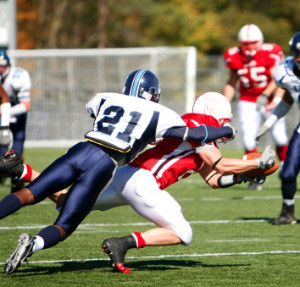 Tampa Bay Buccaneers linebacker Lavonte David suffered a high-ankle sprain during a game versus the Minnesota Vikings. He was driven off the field on the back of a cart. David said that the injury is minor and that he’ll recover quickly. Furthermore, in a sign of good news his X-rays revealed that he did not injure anything major. That being said, it is unknown just how long he will be out for. The Buccaneers’ defense performed poorly, with the Vikings winning 34-17.
Tampa Bay Buccaneers linebacker Lavonte David suffered a high-ankle sprain during a game versus the Minnesota Vikings. He was driven off the field on the back of a cart. David said that the injury is minor and that he’ll recover quickly. Furthermore, in a sign of good news his X-rays revealed that he did not injure anything major. That being said, it is unknown just how long he will be out for. The Buccaneers’ defense performed poorly, with the Vikings winning 34-17.
Sports related foot and ankle injuries require proper treatment before players can go back to their regular routines. For more information, contact one of our podiatrists of Lovely Foot Associates, PC. Our doctors can provide the care you need to keep you pain-free and on your feet.
Sports Related Foot and Ankle Injuries
Foot and ankle injuries are a common occurrence when it comes to athletes of any sport. While many athletes dismiss the initial aches and pains, the truth is that ignoring potential foot and ankle injuries can lead to serious problems. As athletes continue to place pressure and strain the area further, a mild injury can turn into something as serious as a rupture and may lead to a permanent disability. There are many factors that contribute to sports related foot and ankle injuries, which include failure to warm up properly, not providing support or wearing bad footwear. Common injuries and conditions athletes face, including:
Sports related injuries are commonly treated using the RICE method. This includes rest, applying ice to the injured area, compression and elevating the ankle. More serious sprains and injuries may require surgery, which could include arthroscopic and reconstructive surgery. Rehabilitation and therapy may also be required in order to get any recovering athlete to become fully functional again. Any unusual aches and pains an athlete sustains must be evaluated by a licensed, reputable medical professional.
If you have any questions please feel free to contact our office located in Johnstown, PA . We offer the newest diagnostic and treatment technologies for all your foot and ankle needs.